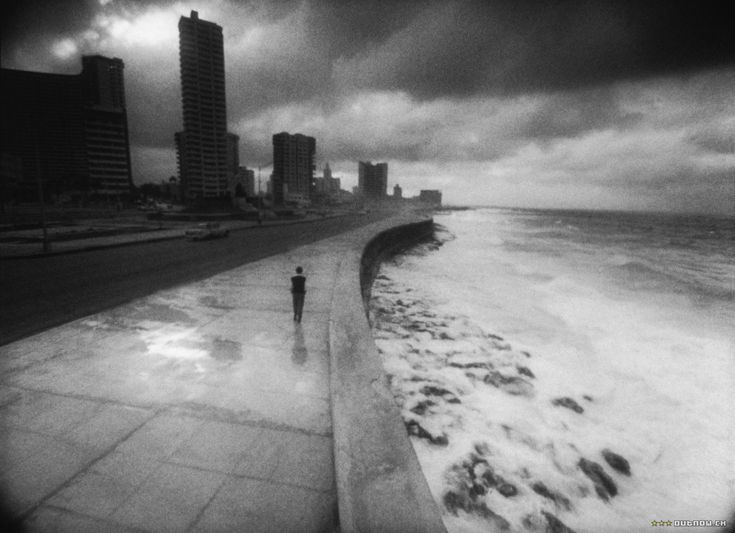Flicker Alley has released a Blu Ray of Paul Leni’s penultimate film, 1928’s The Man Who Laughs. The disc is based on a 4K scan by Universal Pictures of an archival 1954 fine-grain composite print created from the original nitrate negative and looks mostly marvelous. The film is often erroneously labeled a horror film, but it’s a romantic melodrama in the best sense of the term.
The Production: 5/5
Universal’s 1928 The Man who Laughs is based on Victor Hugo’s 1869 novel. Thematically it is similar to Hugo’s Notre Dame of Paris from 1831. They both share characters who are deformed, one by birth and the other through intentional mutilation. Both characters are shunned by society and forced to hide their inner characters from a cruel and mocking world.
The film opens in England in the late 17th century. King James ll is awakened by his jester/hatchet man Barkilphedro with the news that the King’s political nemesis, Lord Clancharlie has been captured. Clancharlie’s son Gwynplaine has been abducted by Barkilphedro and sold into slavery to Comprachico Dr. Hardquannone. Clancharlie begs for mercy for his son. He is told that Dr. Hardquannone has surgically disfigured the boy’s face by cutting nerves so that the child’s face permanently resembles that of laughing jester to always remind the boy of the fool he had for a father.
King James ll then condemns the broken man to the iron maiden.
The Comprachico’s are banished from the country. While setting sail, they are forced to leave young Gwynplaine behind in a raging snowstorm. The child makes his way through a field of hanged men swinging in the wind. Gwynplaine discovers a frozen woman clutching a baby. Gwynplaine learns that the child is still alive and carries her off with him through the storm. This sequence is truly frightening and is the closest thing visually and thematically to a horror movie.
Near collapse, Gwynplaine spots the wagon of traveling sideshow owner Ursus (Cesare Gravina), where the boy seeks and is given shelter. As the surprised mountebank examines the baby sees that the child is blind. As Ursus tends to the baby he looks over at the boy’s unwrapped face and sees Gwynplaine’s laughing face. He tells the boy to stop laughing and continues to tend to the child. He looks over again and Gwynplaine and yells at the boy to stop laughing; the child then explains his disfigurement. Ashamed, Ursus realizes his mistake and a family of outsiders is born.
Fifteen years pass when we next see the traveling troupe which has become a theatrical sensation with a show consisting of the blind girl Dea (Mary Philbin) and the disfigured Gwynplaine (Conrad Veidt). Crowds jam the tents to laugh at the ‘laughing man.’ Dea has fallen in love with Gwynplaine who feels unworthy of the blind girl’s love, believing that if she could see, she too would reject him as does the rest of the world.
Back in London, Gwynplaine is spotted by Hardquannone who knows of Gwynplaine’s royal lineage and reveals this information to Barkilphedro is now an advisor to Queen Anne. Barkilphedro confirms this and has Hardquannone executed.
Attracted to the excitement of the carnival that Ursus’ troupe is a part of, the aristocratic and petulant Josiana (Olga Baclanova) disguises herself as a commoner and attends a performance. She is fascinated and intrigued by Gwynplaine’s disfigurement and on a lark invites him for her amusement to her house that evening. Gwynplaine, wanting to escape constant ridicule and experience the passion of a ‘normal’ man, goes to Josiana, unsuspecting her perversity. When she too laughs at him, he is devastated, believing he is unfit to be loved.
Barkiphedro informs the Queen of Gwynplaine’s existence. Josiana, disliked by the queen is the owner of what is rightfully Gwynplaine’s estate. As a perverse joke the queen arranges for Gwynplaine to be admitted to the House of Lords and in order for Josiana to retain her title and property, she must marry Gwynplaine and be publicly humiliated.
Usrsus is told that Gwynplaine has been killed and that he must leave the country by order of the queen. Setting up the climax, Gwynlaine escapes after being humiliated by The House of Lords and thus finding himself with no place in society. The film ends with an exciting chase and Gwynplaine is reunited with Dea, Ursus, and Homo in the only home he can ever know.
That’s a lot of plot. The novel The Man who Laughs is not as sprawling or ambitious as Notre Dame of Paris. There hasn’t been a truly faithful film version of Notre Dame of Paris as the story always gets whittled down to Quasimodo and Esmeralda, which is only a portion of the novel. The Man who Laughs doesn’t require nearly the same kind of paring down to fit into a two-hour movie.
Both stories examine the theme of physical and spiritual deformity. Both Quasimodo and Gwynplaine are the only male characters in both novels who, in spite of their physical conditions, are capable of purer emotions or noble gestures. Dea’s blindness enables her to know the true Gwynplaine. When Gwynplaine, though he loves Dea, tries to reject her love and thus save her the humiliation of being married to ‘The Laughing Man’, blames her blindness as the only reason for her love, Dea says to him, ‘God closed my eyes so I could see the real Gwynplaine.’
The pitiless villains, Barkilphedro, Hardquannone, Josiana, and Queen Anne are more monstrous than any conventional movie monster. All of these characters are willing to go to any length, no matter how cruel to satisfy their lust for power – political or sexual. It’s interesting that Olga Baclanova would play a similar character in Tod Browning’s Freaks five years later.
The movie is beautifully designed by Charles D. Hall. Hall’s work goes from Chaplin shorts and later features to Universal 1930’s horror classics to James Whale’s Show Boat and Laurel and Hardy movies for Hal Roach. Hall’s work at Universal pretty much creates and defines the look of horror films for generations.
The exquisite photography is by Gilbert Warrenton whose works go from the mid-teens all the way into the 60’s with television work and theatrical titles like Ray Milland’s Panic in the Year Zero. The design and photography combine to create a stylized 19th century England that in some scenes are very detailed with lavish sets, as in the scenes at court or exteriors and in other scenes abstract, showing only what is absolutely essential as in the scene of Clancharlie going to the iron lady.
Makeup is by Jack P. Pierce, the man later known for all of his iconic Universal monster creations. Later directors Edward L. Cahn and Lew Landers are also worked on the film. Cahn as the film’s editor.
Performances are all wonderful. I can’t think of a bad performance, even Zimbo the dog is good as Ursus’ dog Homo. Mary Philbin gets top billing, but the movie belongs to Conrad Veidt as Gwynplaine. Because his face is disfigured, he has to communicate with his eyes and the rest of his body. It’s a very physical performance, similar to his earlier performance in The Cabinet of Dr. Caligari. He was the perfect actor for expressionism.
I also love looking at Cesare Gravina’s face. Peter Lorre supposedly compared acting to making faces, if this is true, then Gravina is a great actor. It’s a face capable of expressing anger, rage, fear, compassion, and joy.
The film is excellently directed by Paul Leni. The Man Who Laughs is one of those late silent movies where the form has peaked, intertitles are almost superfluous. Leni handles spectacle as well as emotion with equal assurance. The chase at the end is exciting. The scene of Gwynplaine’s humiliation at The House of Lords is devastating. There is a moment near the beginning of the movie after young Gwnplaine discovers the frozen mother and her baby. The boy bundles up the baby and turns to walk away. He pauses and turns to the dead mother and waves goodbye. That moment knocks me out.
Leni after working in theater as an Art Director broke into the German film industry in the same role in the early teens. He was directing within a few years and in the late 20’s started working at Universal where he directed four silent features before his premature death in 1929 at age 44.
It’s fun to contemplate where Leni would have fit into at Universal had he lived. His films look spectacular. This undoubtedly has to do with his experience as an Art Director. The Man Who Laughs, like The Hunchback of Notre Dame, is often described as a horror film, but that’s not accurate, though he is working with several key figures (Hall, Pierce) who would be instrumental in the success of that genre at Universal a few years later.
Video: 4.5/5
3D Rating: NA
The Man Who Laughs as stated above, is from a 4K scan done by NBCUniversal and it looks great. There are some scratches and minor blemishes, but it looks incredible for a 91-year-old movie.
Audio: 4.5/5
There are two music scores, one is a 1928 Movietone score recorded shortly after the film’s original release; it also contains some sound effects. The second is a new score recorded by members of Boston’s Berklee School of Music. Both scores are very good with the Movietone obviously sounding less full than the recent score.
Special Features: 4/5
Extras include:
A DVD containing the same content.
A booklet with an essay by author and film historian/restorationist Kevin Brownlow. It’s an excellent essay that sticks to the film, it’s source and production. Brownlow is a key figure in keeping silent films in the public eye. The booklet also contains a short essay by Berklee’s Sonia Coronado regarding the newly recorded score.
Paul Leni and The Man Who Laughs – an informative video by film historian John Soister on Leni’s tenure at Universal.
Image Gallery
Overall: 4.5/5
I love The Man Who Laughs. I find it tremendously moving. Flicker Alley has provided fans with what is probably a definitive version of the film. I was lucky to see it projected in 35mm nearly 30 years ago as part of a Universal 80th-anniversary series and it looked great then and their new transfer looks marvelous. It’s reached a point where silent films are often approached with dread, even by some film lovers; that is unfortunate because if given a chance, films like The Man Who Laughs would certainly turn some of those skeptics into converts. Flicker Alley does indispensable work in bringing (mostly) silent film classics to physical media. It’s a thankless job that needs to be supported by enthusiasts. I can’t recommend this disc highly enough.
https://www.amazon.com/Man-Who-Laughs-Blu-ray/dp/B07PK6K31Q/ref=sr_1_1?crid=Y9GV6T3FGJ4G&keywords=the+man+who+laughs+bluray&qid=1572188787&s=movies-tv&sprefix=the+man+who+la%2Caps%2C199&sr=1-1Post Disclaimer
Some of our content may contain marketing links, which means we will receive a commission for purchases made via those links. In our editorial content, these affiliate links appear automatically, and our editorial teams are not influenced by our affiliate partnerships. We work with several providers (currently Skimlinks and Amazon) to manage our affiliate relationships. You can find out more about their services by visiting their sites.






Similar threads